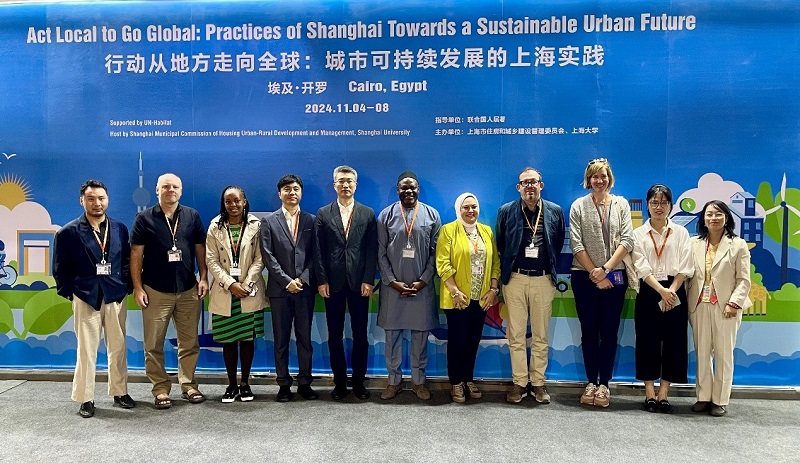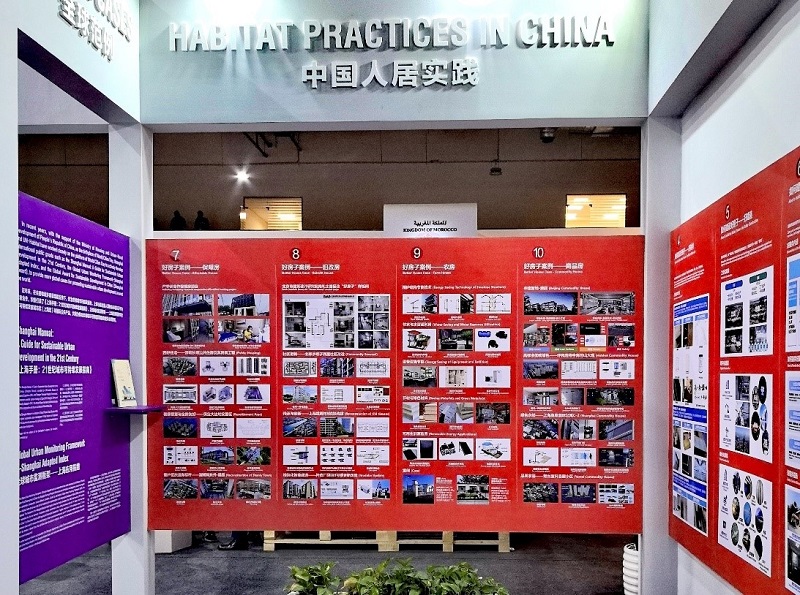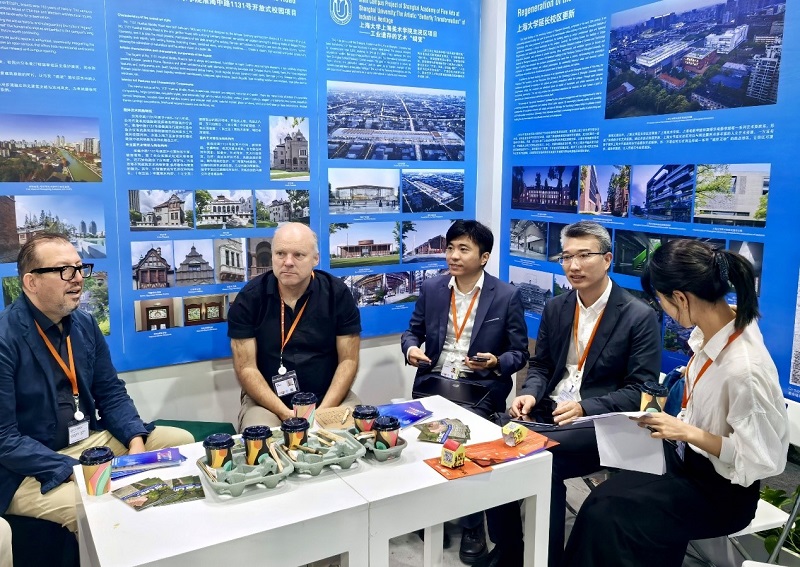The twelfth session of the World Urban Forum (WUF12) is taking place in Cairo, Egypt, from 4 to 8 November 2024. Over 37,000 government officials, urban planners, business leaders, scholars, and representatives of social organizations from 182 countries and regions around the world are present to jointly explore ways for sustainable urban development.

Li Wei (5th from left) poses for a group photo with other guests who attended a side event of the twelfth session of the World Urban Forum.
Songyang, a county in east China’s Zhejiang Province with over 100 well-preserved traditional villages, has a lot to share with the world on this occasion.
China’s traditional villages exhibit distinct regional characteristics, influenced by both the natural environment and cultural factors. Currently we have 8,155 documented traditional villages. They testify to the long history of housing development in China and reflect the rich architectural civilization and profound nostalgia of the Chinese nation. However, with urbanization accelerating, traditional villages face the severe challenge of disappearing. Against this backdrop, the Chinese government has emphasized the need to adapt measures locally to renovate and protect traditional villages, ensuring that the roots of agricultural civilization continue to thrive. With this in mind, we are seeking to protect and utilize our traditional villages, striving to breathe a new life into these ancient architectural remnants amidst the rapidly changing modern society.
We believe that the protection and utilization of traditional villages should not simply involve preserving traditional buildings as artifacts. Instead, their residential function should be emphasized. It is important to bear in mind the fundamental principle that “houses are meant to be lived in.” Through daily use, we infuse traditional architecture with contemporary significance, transforming it into a bridge connecting the past and the future.
Songyang, which boasts a history of over 1,800 years, is a typical mountainous region. Thanks to its favorable agricultural conditions and long-standing stable social environment, it has nurtured a rich agricultural culture while preserving numerous historical and cultural relics. The county is home to more than 100 well-preserved traditional villages, earning it the recognition of being a “model county of classical China.”

Inside the booth “Habitat Practices in China” at the WUF 12, cases of how people in China live in harmony with nature are displayed.
Since 2012, Songyang has systematically carried out architectural, economic, and cultural restoration work on traditional villages, starting with the “Save the Old Houses” initiative. Over the past 12 years, we have forged a path for the modernization and revitalization of traditional villages that both preserves our ancient heritage and paves the way for future prosperity.
First and foremost, we adhere to the principle of “repairing the old as the old.” We aim to restore and maintain the historical appearance of traditional villages through systematic planning and scientific restoration. For that, in terms of policy, we have issued several blueprints such as the Overall Plan for the Protection and Development of Traditional Villages in the County and the Detailed Plan for the Protection and Development of Traditional Villages. They clarify the goals, content, and implementation methods to systematically advance protection efforts. In terms of funding, we employ a model where 50 percent of the funds come from cultural relic protection funds, 30 percent from the government, and 20 percent from villagers’ own contributions, thus securing repair funding.
On the technical side, we have established technical standards and guidelines for the restoration work to prevent harmful modifications to architectural heritage. Regarding talent development, we are cultivating traditional craftsmen through skills training, apprenticeship systems, and skill competitions, ensuring the inheritance of traditional crafts like woodwork, tiling, and stone carving. So far, over 1,200 traditional buildings have received systematic protection, and more than 200 ancestral halls and 20 ancient covered bridges have undergone emergency repairs.
We are also pursuing “functional upgrades.” This means striving to enhance the safety and livability of historical buildings while preserving their original structure and appearance. Our fundamental principles are to maintain the building’s original state—repairing rather than replacing, adhering to local practices, and protecting the cultural and architectural landscape—while eliminating hazardous factors and improving usability. This includes waterproofing roofs, adding modern drainage and electrical systems, and incorporating modern amenities such as kitchens and bathrooms. After comprehensive renovations, the traditional residences have become much more suitable for future occupation.

Li Wei (second from right) holds a discussion with other guests at a side event of the WUF 12.
Last but certainly not the least, we emphasize “revitalization and utilization” in our work, integrating historical culture with modern life and enhancing the application scenarios of traditional buildings. The protection and development of traditional villages involves more than just temporary repairs; to ensure that these historical structures can enjoy a “long and healthy life,” it is essential to strengthen daily maintenance and care to prevent “minor issues” from turning into “major problems.” In this process, “human use” is key. To this end, we highlight the residential function of traditional architecture by transforming idle buildings into homestays. These homestays not only preserve the historical appearance and cultural characteristics of the buildings but also incorporate modern comforts and conveniences, making them ideal choices for tourists and wellness seekers. In recent years, we have developed a total of 456 homestays, generating over RMB 150 million in revenue. This has earned Songyang the title of “China’s No.1 county for ancient village homestays.” Furthermore, we have added museums and art galleries, creating a series of culturally rich villages and artist communities. This has fostered a virtuous cycle where development and preservation reinforce each other.
Through years of practice, the protection and utilization of traditional architecture in Songyang has evolved from a regional initiative to a globally applicable sample, further expanding the concept of future housing.
We firmly believe that the protection and utilization of traditional villages concern not only the history of housing but also future housing development models. Housing construction must strike a balance between protection and utilization, and between inheritance and development, to ensure that it is rooted in historical foundations while adapting to current needs and leading future trends. We are confident that through our collective efforts, we will find more practical paths to advance global housing initiatives.
_____________
LI WEI is director of the Publicity Department of the CPC Songyang County Committee.